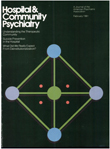Continuity of Mental Health Care to Youth in the Juvenile Justice Network
Abstract
A sizable number of youth at risk for psychiatric disabilities enter the juvenile justice system each year without sufficient screening mechanisms or treatment systems. In 1977 the children and youth division of a mental health center began a program of evaluation, treatment, and consultation for juveniles in the subsystems of probation, secure and nonsecure detention centers, urban group homes, and other postadjudication residential facilities. One of the major benefits—a central and coordinated response to youth identified as having significant emotional problems—stems from the opportunities opened up through the continuing care offered to this population. The agencies involved have been more accepting of the patient-centered method of service involvement than of program or staff development consultation.
Access content
To read the fulltext, please use one of the options below to sign in or purchase access.- Personal login
- Institutional Login
- Sign in via OpenAthens
- Register for access
-
Please login/register if you wish to pair your device and check access availability.
Not a subscriber?
PsychiatryOnline subscription options offer access to the DSM-5 library, books, journals, CME, and patient resources. This all-in-one virtual library provides psychiatrists and mental health professionals with key resources for diagnosis, treatment, research, and professional development.
Need more help? PsychiatryOnline Customer Service may be reached by emailing [email protected] or by calling 800-368-5777 (in the U.S.) or 703-907-7322 (outside the U.S.).



